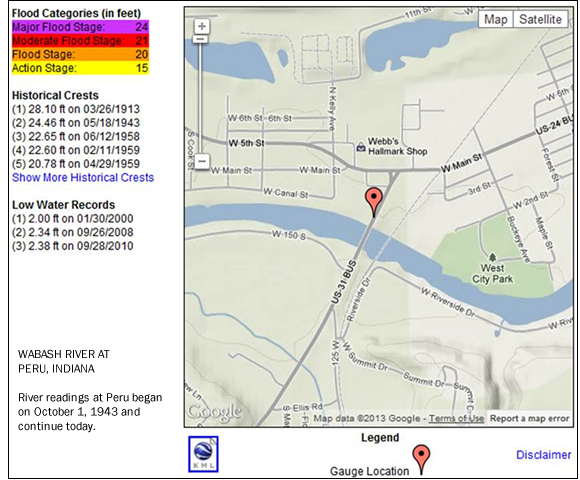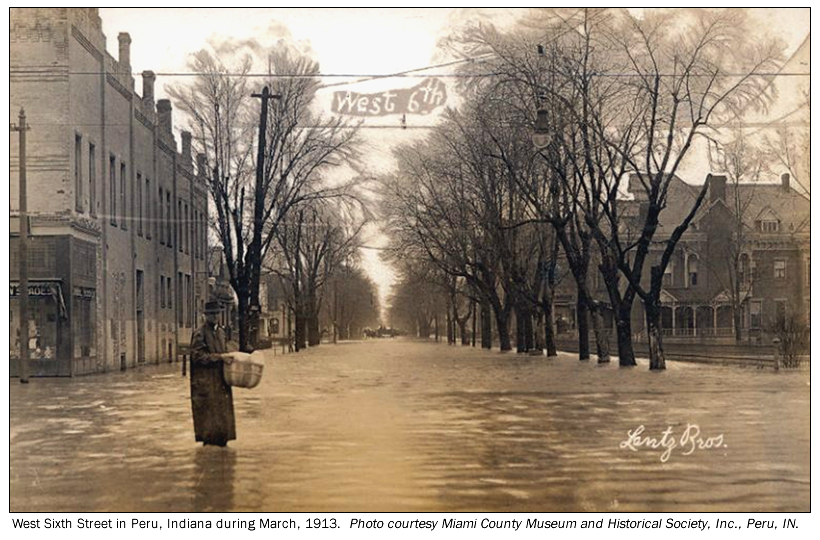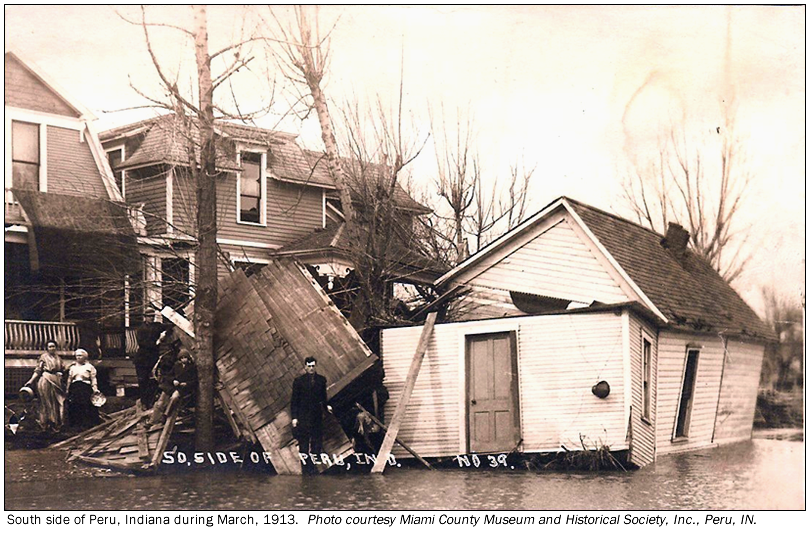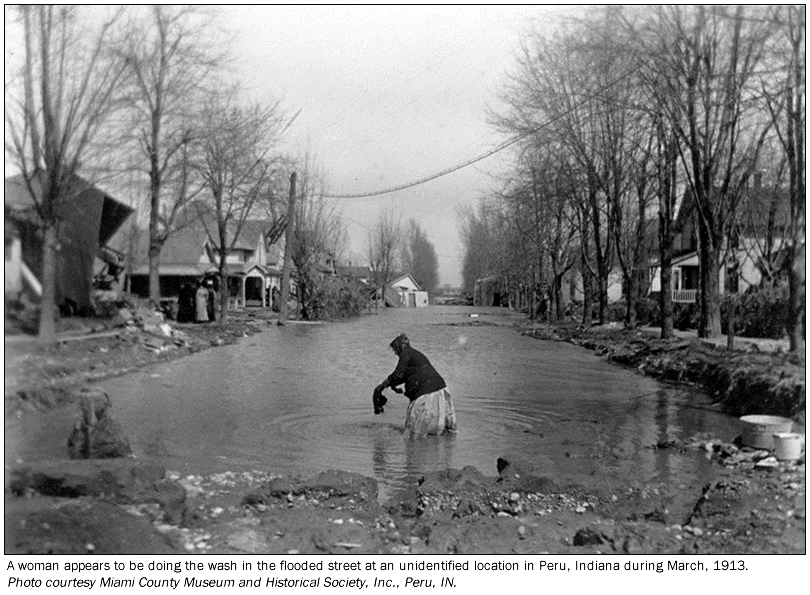The Great Flood of 1913
100 Years Later
Community Profiles: Peru, Indiana
| River: | Wabash |
| Storm Total Rainfall: | At least 5" |
| Known Fatalities: | 11 |
Timeline
The following is from researcher Ron Withers, who is a volunteer at the Miami County Historical Society.
The 1913 flood was unlike any other flood in the history of Peru, Indiana. By March 22, 1913, the ground around Peru was already saturated from previous storms, and the Wabash River was at a normal level for March. Over the next 5 days, almost 8 inches of rain and snow fell on the water-soaked Upper Wabash Valley, overwhelming the capacity of the ground to absorb any further moisture, and causing a disaster that drowned eleven people in Peru.
Water data from the United States Geological Survey states that the normal amount of stream flow for the Wabash River at Peru in 1913 was around 10,000 cubic feet per second (CFS). The major floods experienced in the town before 1913 averaged 20-30,000 CFS. The 1913 flood dwarfed previous numbers, peaking at a staggering 118,000 CFS, almost 7 times worse than any previous flood. The depth of the Wabash at Peru averages 10 feet under normal conditions. The 1913 flood pushed that level to 28.1 feet in a matter of hours. The water rose so fast that no one was able to prepare for the calamity that ensued. The freezing weather and snow during the height of the flood added to the misery of the flooding.
Impacts
Two thirds of Peru, Indiana was damaged or destroyed, the circus winter quarters east of town were devastated, and the industrial backbone of the town was broken.



The flood was the high-water mark for Peru in another way. The town never fully recovered from the estimated three million dollars in property damage inflicted by the flood. Some of the biggest businesses in town left for safer locations, growth stagnated, and the industrial boom ended. By early 1969, three Corps of Engineers dams finally harnessed the upper Wabash River, but 100 years later, there are 2,000 fewer residents than in 1913.
Flood Protection Measures
Three Corps of Engineers reservoirs (JE Roush, Salamonie and Mississinewa) provide combined flood control benefits for 78% of the drainage area upstream of Peru and greatly reduce Wabash River flooding in Peru.
To update information about the March 1913 flood story of Peru contact Al Shipe by e-mail al.shipe@noaa.gov.

